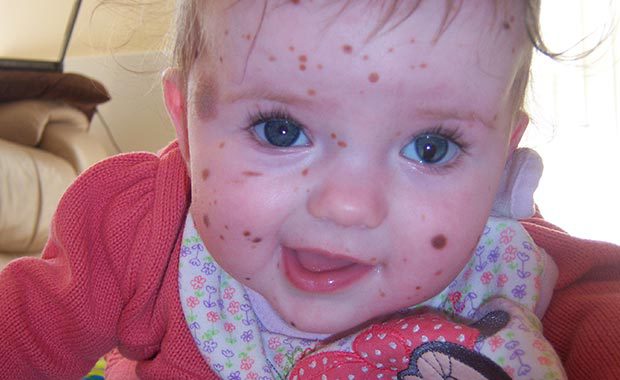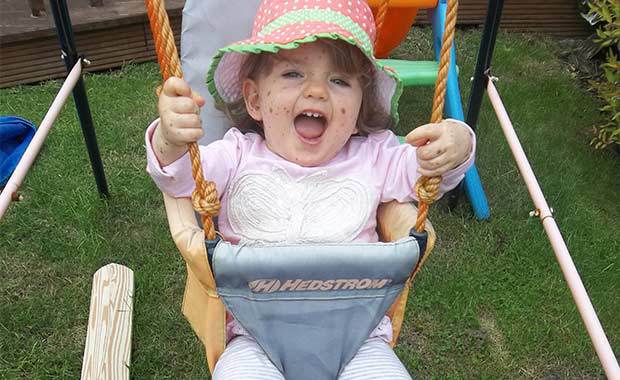UK scientists lead the way in care for Congenital Melanocytic Naevus.
Birthmarks in some can indicate potentially fatal mutations
Birthmarks and moles are very common human characteristics. On the whole, they are harmless, but for a very small percentage of the population an abundance of moles present at birth, known as Congenital Melanocytic Naevi (CMN), could indicate a potentially fatal gene mutation that causes moles to develop on the brain and spinal cord too.
As few as two moles on a newborn baby is enough to alert medical staff that there may be internal complications that need to be investigated. Single small CMN are found in 1% of all newborn babies. Large or very numerous CMN however are rare, occurring in around 1 in 20,000 babies.

As few as two moles on a newborn baby is enough to alert medical staff
“The research has really helped us to understand what causes CMN”
Until very recently, doctors knew very little about the condition and what caused it, but in 2013, a research team led by Dr Veronica Kinsler, Consultant Paediatric Dermatologist and the Academic Lead Clinician in the Paediatric Dermatology department, Great Ormond Street Hospital, discovered that a mutation in the NRAS gene, which is also associated with melanoma, was responsible for multiple CMN.
“The research has really helped us to understand what causes CMN and, as a result, we are now in a much better position to start developing treatments,” says Dr. Kinsler. Brain scans are now conducted as a matter of course on babies who present two or more moles at birth. “We find that in 80% of cases there is nothing to worry about, but in about 20% of cases we might find other moles on the brain, or tumours, extra fluid or malformations that need to be monitored.”
There is still currently no cure for aggressive melanoma
Sadly, some children with CMN can develop an aggressive form of melanoma, for which there is currently no cure. Over the past few years Dr. Kinsler has been trialing a medicine to treat patients with CMN and melanoma. In January of this year, the paper was accepted by the British Journal of Cancer, sparking the next step in treatment of CMN. “Whilst the new drug has not cured patients, we have seen some symptomatic improvements and no major side effects,” explains Dr. Kinsler. “We are now keen to trial the drug in high-risk CMN patients before they develop melanoma.”

Sadly, some children develop an aggressive form of melanoma, for which there is currently no cure.
The development provides real hope for a condition that is currently untreatable. Dr. Kinsler is positive that this breakthrough, accompanied by other developments within medicine, could lead to greater advances in the generation of suitable gene therapy. It’s certainly not easy to develop a therapy that can safely correct a mutation in just one gene, but it’s not impossible as advancements in other fields have shown.
“It’s a real challenge tackling a genetic condition affecting the skin and brain, but there is a really concerted effort from patient groups and the medical community around the world, in my case a really strong partnership between the patient support group Caring Matters Now and my research team in UCL/GOSH. I’m confident we will find new treatments within the next ten years,” concludes Dr Kinsler. “If we don’t find a cure, we will I’m sure improve life for people with CMN.”


